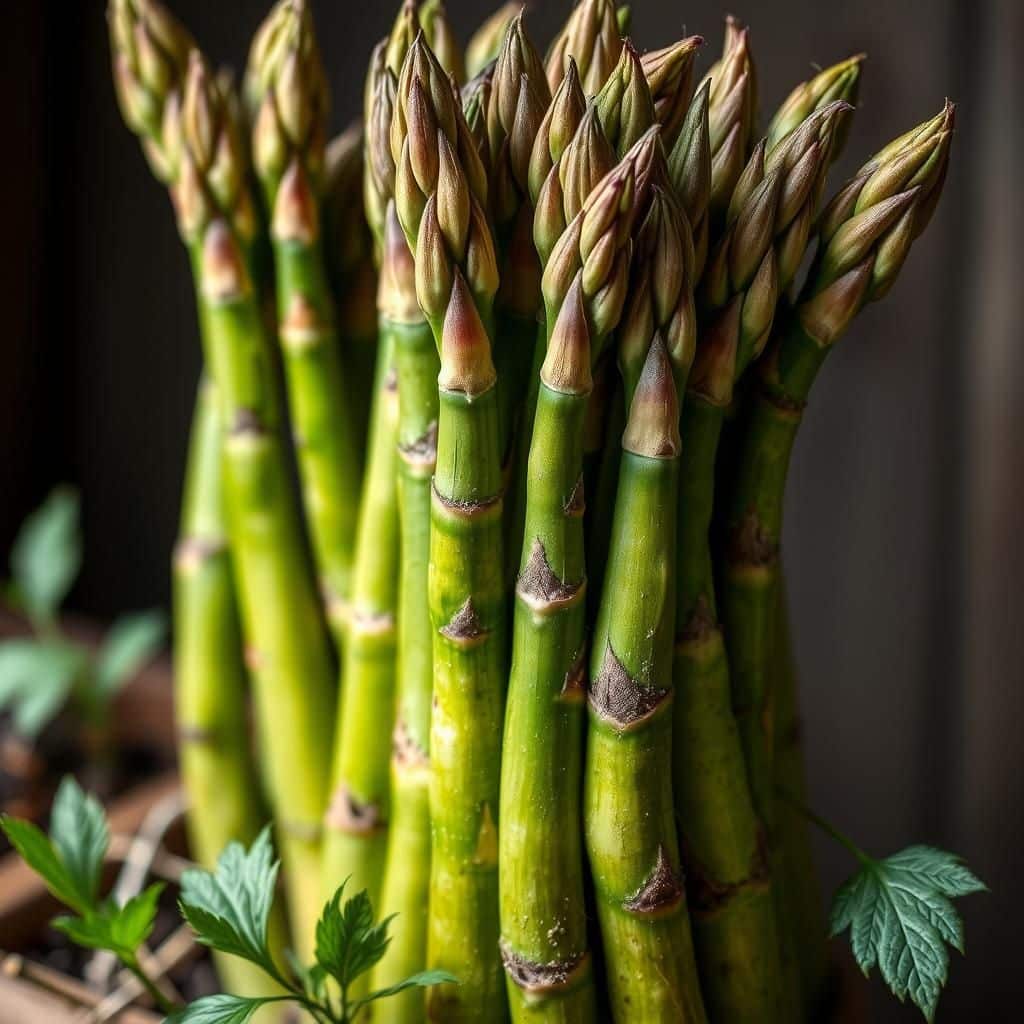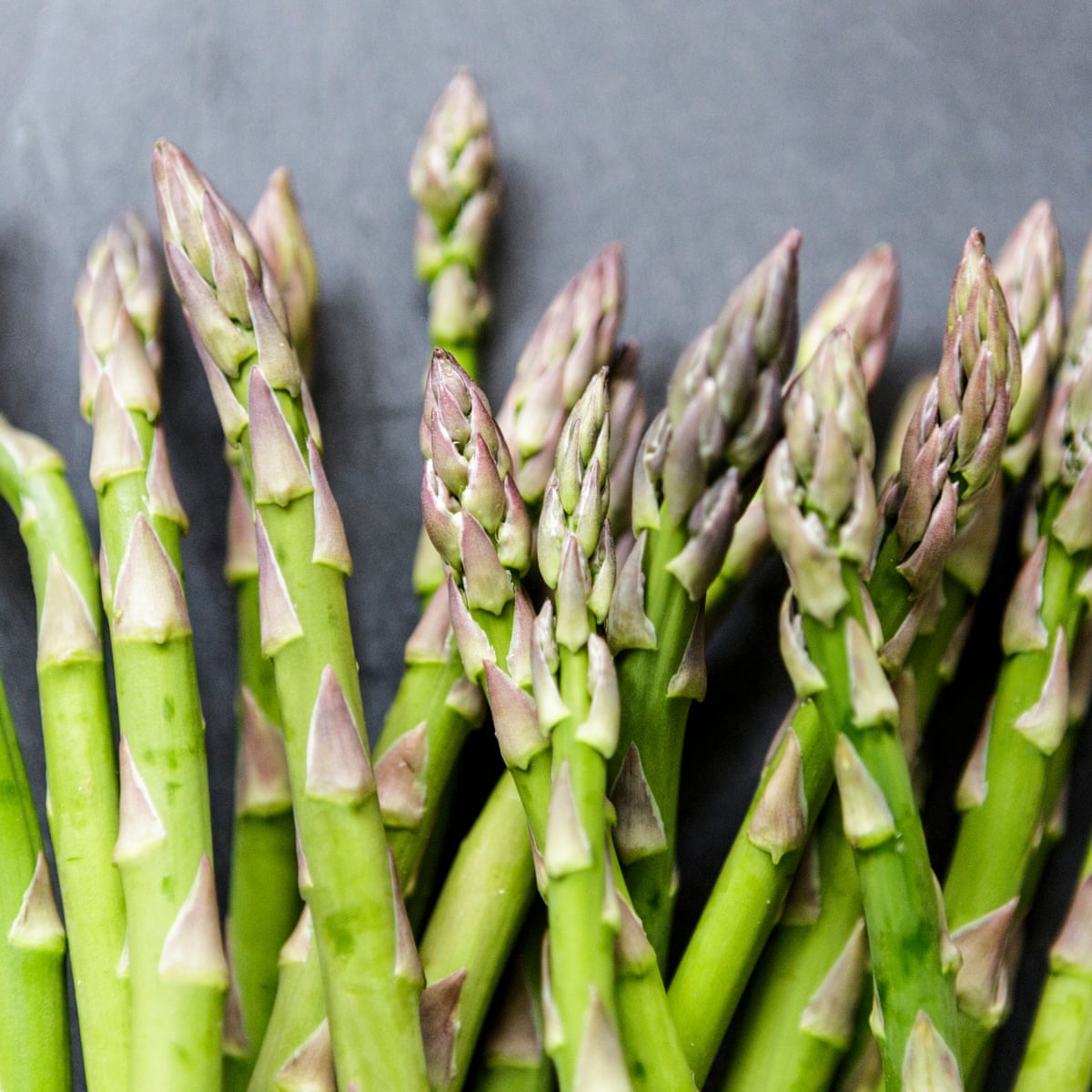The Ultimate Guide to Growing Asparagus in Australia: Tips and Techniques for Successful Harvests

Asparagus is a highly nutritious and versatile vegetable that has gained popularity among Australian gardeners. Known for its distinct flavor and health benefits, growing asparagus can be a rewarding endeavor for both novice and experienced growers. This ultimate guide provides essential tips and techniques for cultivating asparagus successfully in Australia’s unique climate. From choosing the right variety to planting, caring for, and harvesting your crop, each section of this guide is designed to help you achieve a fruitful asparagus harvest. Whether you have a small backyard or a larger plot, you can enjoy fresh asparagus right from your garden.
Best Practices for Growing Asparagus in Australia
Growing asparagus in Australia can be a rewarding endeavor, particularly because of the country's diverse climates that can accommodate different varieties of this delicious and nutritious vegetable. The best time to plant asparagus is during the spring when the soil temperature reaches around 10°C (50°F). Selecting a well-drained spot with full sunlight is crucial, as asparagus thrives in rich, sandy soils that allow for proper drainage. Regular watering, while being careful not to overwater, is essential during the first year to establish healthy roots. Additionally, applying organic mulch can help retain moisture and suppress weeds, promoting optimal growth conditions.
Choosing the Right Variety
When growing asparagus in Australia, it is important to select the right variety that suits the local climate. Some of the best options include the green-seeded varieties like 'Apollo' and 'UC 157', which are known for their adaptability and high yield. While purple varieties, such as 'Purple Passion', offer a sweeter taste and a vibrant color, they may not be as widely adapted. For colder regions, 'Mary Washington' is a traditional favorite that performs well in cooler temperatures. Choosing a variety that aligns with the growing conditions will significantly impact your success.
Soil Preparation Techniques
Proper soil preparation is vital for successful asparagus cultivation. Before planting, it's recommended to conduct a soil test to determine pH levels and nutrient content. Asparagus prefers a pH between 7.0 and 8.0, indicating a slightly alkaline environment. Amend the soil with organic matter such as compost or well-rotted manure to enhance nutrient content and improve soil structure. It is also essential to remove any weeds and debris, as these can compete with young asparagus plants. Establishing raised beds can improve drainage, further promoting healthy root development.
Irrigation and Water Management
Irrigation is a critical component in the successful growth of asparagus in Australia, especially during dry periods. Young plants require consistent moisture to develop robust root systems. A drip irrigation system is highly recommended, as it delivers water directly to the roots, minimizing waste and leaf wetness that can encourage diseases. During the first few years, aim for about 2.5 cm of water per week, adjusting based on rainfall and soil moisture conditions. After the plants are established, they become more drought-resistant but still benefit from supplemental watering during hot, dry spells.
Pest and Disease Control
Managing pests and diseases is crucial for promoting healthy asparagus plants. Common pests include the asparagus beetle and cabbage beetles, which can be controlled through hand-picking or organic insecticides. Additionally, diseases such as rust and fusarium wilt can pose challenges. Ensuring good air circulation, avoiding overhead watering, and rotating crops can help reduce the risk of disease. Maintaining healthy plants through proper nutrition and care is the best strategy for preventing disease outbreaks.
Harvesting Techniques
Harvesting asparagus should begin in the second or third year after planting, allowing the plants to establish a strong root system. The best time to harvest is in the spring when spears are 15 to 20 cm tall, typically around 10-12 weeks after the start of the growing season. Use a sharp knife to cut the spears at ground level, ensuring to leave the rest of the plant healthy. It is important only to harvest for about six to eight weeks to allow the plants to photosynthesize and store energy in their roots for the following year.
| Aspect | Details |
|---|---|
| Optimal Planting Time | Spring when soil temperature is above 10°C (50°F) |
| Soil pH | Between 7.0 and 8.0 (slightly alkaline) |
| Watering Requirement | 2.5 cm of water per week during first years |
| Common Pests | Asparagus beetles, cabbage beetles |
| First Harvest | Second or third year of growth |
Why is asparagus so expensive in Australia?

Asparagus is considered one of the more expensive vegetables in Australia for a variety of reasons that stem from agricultural practices, market demand, and climate factors.
Production Challenges
The cultivation of asparagus involves several challenges that can drive up its cost.
See also:
- Labor-Intensive Harvesting: Asparagus is primarily hand-picked, which requires a significant amount of labor. The delicate spears must be harvested at the right time to ensure optimal flavor and quality.
- Long Growing Season: Asparagus has a relatively long growing cycle. It takes about 2-3 years before a plant can be harvested, slowing the rate at which farmers can produce and sell the crop.
- Soil and Climate Requirements: Asparagus requires specific soil conditions and a favorable climate. Such conditions are not present in all regions, limiting the areas where it can be effectively grown.
Market Demand
The demand for asparagus has been increasing due to its perceived health benefits and popularity in culinary circles, which affects pricing.
- Health Awareness: Asparagus is widely recognized for its nutritional benefits, making it a popular choice among health-conscious consumers. This heightened demand can lead to increased prices.
- Culinary Trends: As cooking shows and food blogs elevate the status of gourmet and organic food options, asparagus has gained popularity as an upscale vegetable.
- Seasonality: Asparagus is a seasonal product in Australia. This limited availability during certain months can lead to higher prices when consumer demand remains steady.
Import Costs
Even though Australia produces asparagus, it also imports some from other countries, which adds to the overall expense in the market.
- Transport Expenses: Importing asparagus incurs shipping costs, which are typically passed on to consumers, making the price higher than locally-grown products.
- Tariffs and Duties: Imported asparagus may be subjected to tariffs and import duties, further increasing the retail price.
- Quality Control: To ensure that imported asparagus meets Australia’s strict quality standards, extra checks and processing can add to the costs.
Climate Impact
Australia's climate and environmental factors can significantly influence the cost of asparagus production.
- Climate Variability: Changes in weather patterns, such as drought or excessive rainfall, can affect asparagus yields, leading to potential shortages and consequently higher prices.
- Drought Management: Farmers may need to invest in irrigation and other management practices to ensure consistent production, leading to increased operational costs.
- Pest and Disease Management: Asparagus can be susceptible to various pests and diseases. Managing these issues often requires additional resources, contributing to the overall expense of cultivation.
Market Competition
The dynamics of competition among local producers also play a role in determining prices for asparagus in Australia.
- Limited Suppliers: A small number of farms dominate the asparagus market in Australia, which can limit competition and enable higher pricing.
- Organic Certification: Many consumers prefer organic asparagus. The additional costs associated with organic farming can make these products more expensive than conventional options.
- Pricing Strategies: Farmers may adopt premium pricing strategies to reflect the quality of their produce, which can increase the market price for asparagus overall.
Can you grow asparagus in cold climates?

Yes, you can grow asparagus in cold climates, but there are several considerations to keep in mind for successful cultivation. Asparagus is a perennial vegetable that requires specific conditions to thrive. While it can tolerate cold temperatures, proper preparation and care are essential to ensure healthy growth and a fruitful harvest.
Best Varieties for Cold Climates
When growing asparagus in cold climates, selecting the right varieties is crucial. Some varieties are more resilient to low temperatures and shorter growing seasons. Here are some suitable options:
- Mary Washington - A traditional variety known for its reliability and adaptability to cooler climates.
- Jersey Knight - A hybrid variety that offers excellent cold tolerance and high yields.
- Purple Passion - This variety not only withstands cold conditions but also produces sweet, tender spears.
Soil Preparation and Planting Time
Proper soil preparation and timing are vital for asparagus cultivation in cold areas. Asparagus prefers well-drained, loamy soil that is rich in organic matter. Here’s how to prepare:
- Test the soil pH and amend it to around 7.0 for optimal growth.
- Mix in well-rotted compost or aged manure to enhance soil fertility.
- Plant asparagus crowns in early spring, as soon as the soil can be worked, ensuring they are not exposed to frost.
Winter Protection Strategies
To help asparagus survive the harsh conditions of cold climates, implementing winter protection strategies is essential. Here are useful practices:
- Apply a thick layer of mulch after the first frost to insulate the crowns.
- Cover plants with burlap or frost blankets during extreme cold spells.
- Ensure good drainage in the soil to prevent crown rot due to freeze-thaw cycles.
Watering and Nutrient Management
Understanding watering and nutrient management can significantly impact the growth of asparagus in cold climates. Follow these tips:
See also:
- Water deeply but infrequently during the growing season to encourage deep root development.
- Utilize a balanced fertilizer in early spring to support initial growth after winter.
- Reduce watering during the winter months to prevent crown damage from excess moisture.
Pest and Disease Control
In cold climates, controlling pests and diseases is crucial for successful asparagus growth. Here’s what to watch for:
- Monitor for asparagus beetles; use organic pesticides if necessary to manage infestations.
- Promote air circulation around plants to prevent fungal diseases like rust.
- Implement crop rotation and clean up debris during fall to minimize disease risks.
Where does asparagus grow best in the world?

Asparagus is a perennial vegetable that thrives in specific climates and soil types. The best conditions for growing asparagus include well-drained, sandy loam soils with a pH of 7.0 to 7.5, and it requires a cool winter period to truly flourish. Here are some of the regions in the world where asparagus grows best:
Optimal Climate Conditions for Asparagus
Asparagus requires a unique combination of climate factors to grow successfully. The ideal temperature range is between 60°F and 80°F (15°C to 27°C). In regions where winter temperatures fall below freezing, these cold spells play a vital role in the plant's development by promoting dormancy, which is critical for healthy shoots in the spring. Asparagus also prefers a moderate level of precipitation, approximately 20-40 inches (50-100 cm) annually, which helps maintain soil moisture without causing waterlogging.
- Temperature: Between 60°F to 80°F (15°C to 27°C)
- Winter dormancy: Necessary for healthy spring growth
- Moderate precipitation: 20-40 inches annually
Top Countries for Asparagus Cultivation
Among the various countries, Mexico, Germany, Peru, China, and the United States are renowned for their asparagus production. Mexico, particularly, has become a leading exporter due to its favorable climate and modern farming techniques. Germany is known for its high-quality varieties, while Peru capitalizes on its year-round growing season thanks to its climate. The U.S. primarily grows asparagus in California and Michigan, where conditions are suitable for the crop.
- Mexico: Leading exporter with favorable climates
- Germany: Renowned for high-quality varieties
- Peru: Year-round growing opportunities
- China: Significant production levels
- United States: California and Michigan as primary growing states
Soil Requirements for Optimal Growth
The choice of soil is crucial for asparagus cultivation. The best soils are well-drained, sandy loams that allow for adequate aeration and root development. A soil pH of around 7.0 to 7.5 is optimal, ensuring that the plant can absorb necessary nutrients effectively. Heavy clay soils should be avoided, as they can lead to poor drainage and root rot issues. Regular soil testing can help maintain the proper conditions for nutrient levels and pH balance.
- Well-drained sandy loams: Ideal for healthy root systems
- Optimal soil pH: 7.0 to 7.5 for nutrient absorption
- Avoid heavy clay soils: Risk of poor drainage and root rot
Pest and Disease Management in Asparagus
Effective pest and disease management is essential for successful asparagus farming. Common pests include the asparagus beetle and cutworms, while diseases like rust and fusarium can impact crop yield. Integrated pest management strategies, including crop rotation and the use of resistant varieties, play a critical role in maintaining plant health. Regular inspections and proactive treatments can help minimize the impact of these issues.
- Common pests: Asparagus beetles and cutworms
- Diseases: Rust and fusarium
- Management strategies: Integrated pest management and crop rotation
Harvesting Practices for Asparagus
Harvesting asparagus requires careful attention to timing and technique. The best time to harvest is when the spears reach about 6 to 8 inches in height, typically when the tips are still closed. Harvest should be done in the early morning for better freshness. Care should be taken to use a sharp knife to cut the spears cleanly at ground level, ensuring minimal damage to emerging shoots. Proper harvesting techniques can significantly enhance the overall yield and quality of the asparagus.
- Optimal spear height: 6 to 8 inches
- Harvest timing: Early morning for freshness
- Technique: Use a sharp knife and cut at ground level
Questions from Our Readers
What climate is best for growing asparagus in Australia?
The ideal climate for growing asparagus in Australia is one with warm summers and cool winters. Asparagus thrives in regions where the average temperature ranges between 15°C to 25°C during the growing season, with a well-defined dormant period in winter, which helps promote healthy growth in the following season.
When is the best time to plant asparagus in Australia?
The best time to plant asparagus in Australia is during the spring months, typically from September to October. This timing allows the plants to establish their roots before the warmer weather arrives, ensuring a more prosperous growth period and increasing the chances of a fruitful harvest in subsequent years.
See also:
How long does it take for asparagus to grow after planting?
Asparagus typically takes 2 to 3 years to establish itself fully after planting. During this time, the plants develop their root systems, and it's essential to avoid harvesting until the third year to allow them to grow strong enough for a sustainable harvest in the future.
Can asparagus be grown in containers in Australia?
Yes, asparagus can be successfully grown in containers in Australia, provided the containers are large enough to accommodate their root systems. It’s important to ensure good drainage and to maintain adequate soil moisture, as well as to choose a variety that is suitable for container growth for the best results.

If you want to read more articles like The Ultimate Guide to Growing Asparagus in Australia: Tips and Techniques for Successful Harvests, we recommend you check out our Seeds category.
Leave a Reply
Related Articles